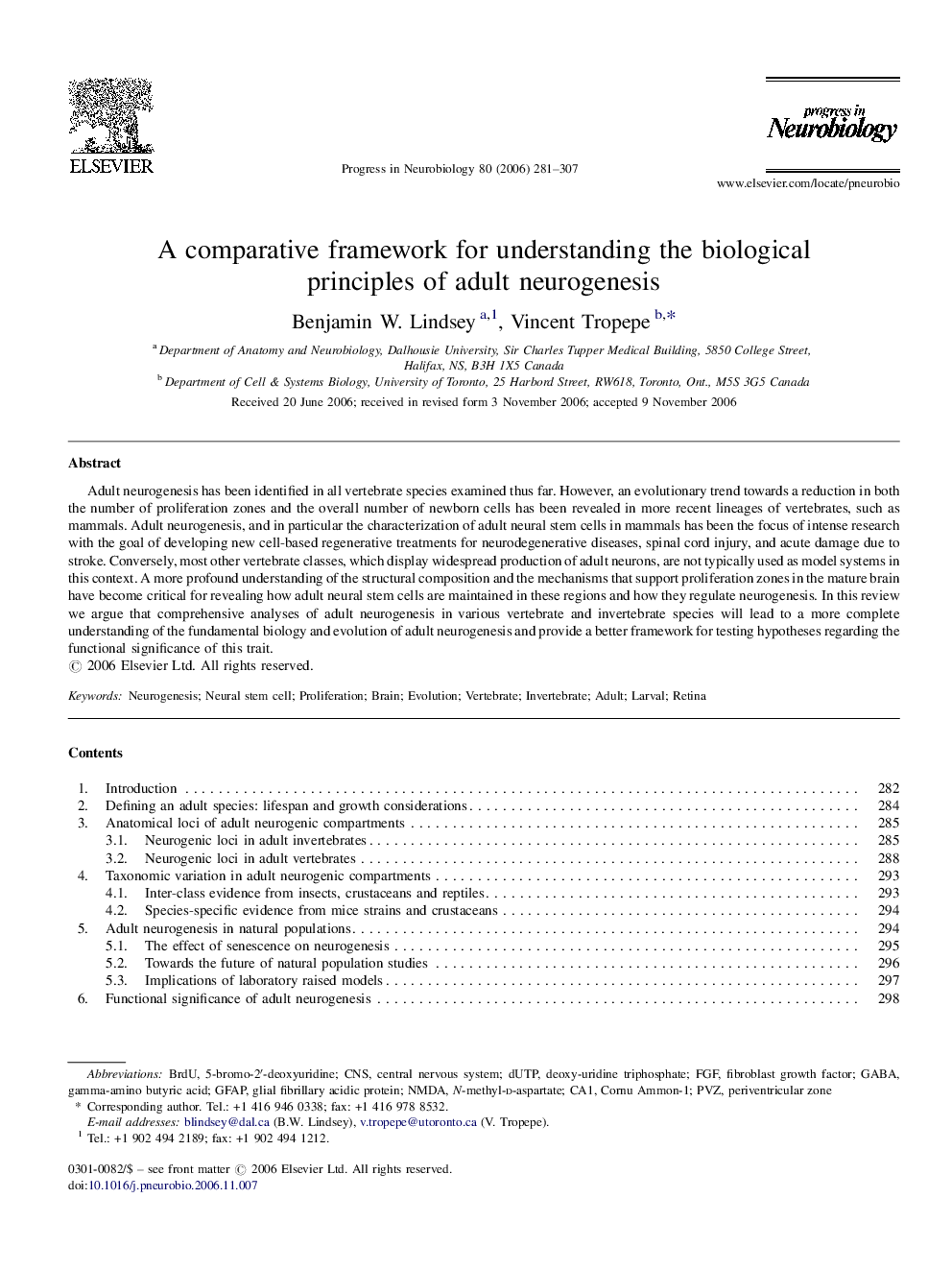| Article ID | Journal | Published Year | Pages | File Type |
|---|---|---|---|---|
| 4354007 | Progress in Neurobiology | 2006 | 27 Pages |
Adult neurogenesis has been identified in all vertebrate species examined thus far. However, an evolutionary trend towards a reduction in both the number of proliferation zones and the overall number of newborn cells has been revealed in more recent lineages of vertebrates, such as mammals. Adult neurogenesis, and in particular the characterization of adult neural stem cells in mammals has been the focus of intense research with the goal of developing new cell-based regenerative treatments for neurodegenerative diseases, spinal cord injury, and acute damage due to stroke. Conversely, most other vertebrate classes, which display widespread production of adult neurons, are not typically used as model systems in this context. A more profound understanding of the structural composition and the mechanisms that support proliferation zones in the mature brain have become critical for revealing how adult neural stem cells are maintained in these regions and how they regulate neurogenesis. In this review we argue that comprehensive analyses of adult neurogenesis in various vertebrate and invertebrate species will lead to a more complete understanding of the fundamental biology and evolution of adult neurogenesis and provide a better framework for testing hypotheses regarding the functional significance of this trait.
